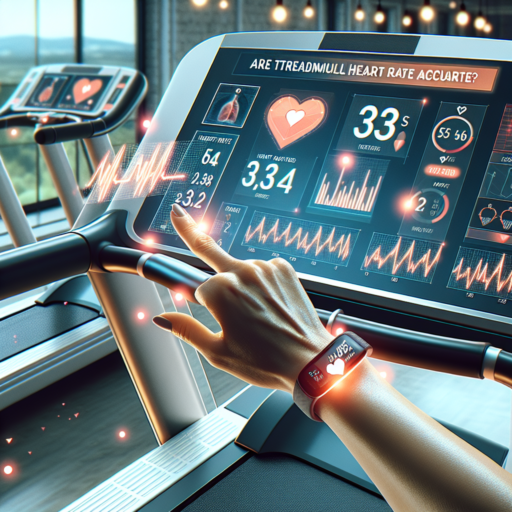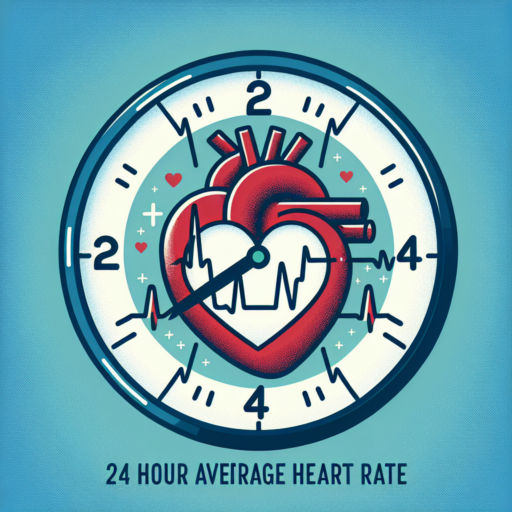Introduction: The Truth About Treadmill Heart Rate Monitors
Understanding the precision and functionality of treadmill heart rate monitors is crucial for anyone aiming to maximize their cardio workouts. When stepping onto a treadmill, many rely on the built-in heart rate monitors to guide their intensity and ensure they are working within their target heart rate zones. But how accurate are these devices? And what should users know about optimizing their use? This introduction delves into the truth about treadmill heart useful insights for ensuring you’re getting the most out of your cardiovascular sessions.
Treadmill heart rate monitors typically come in two forms: grip monitors and wireless monitoring systems. Grip monitors require users to hold onto sensors on the treadmill’s handlebars, while wireless systems use a chest strap or wristband to transmit heart rate data to the treadmill. While wireless monitors are generally more accurate, understanding the nuances of each type can significantly impact the effectiveness of your workouts and the reliability of the data you gather.
Several factors influence the accuracy of treadmill heart rate monitors, including device quality, user characteristics, and the nature of the workout itself. For individuals aiming to track their heart rate accurately, knowing these variables and how they might affect readings is essential. Moreover, integrating heart rate data with other metrics such as pace, distance, and calories can provide a more holistic view of workout performance and progress. Through this understanding, exercisers can fine-tune their efforts, adjusting the intensity and duration of their workouts for optimal fitness gains and health benefits.
How Do Treadmill Heart Rate Monitors Work?
Treadmill heart rate monitors utilize a couple of different technologies to measure your heart rate accurately while exercising. This vital piece of feedback helps users to track their cardiovascular health and exercise intensity in real-time. Understanding how these devices work can enhance your workout experience by allowing you to train within your optimal heart rate zones.
Primarily, most treadmills use contact pulse sensors. These sensors are integrated into the handles of the treadmill and require the user to grip them firmly to measure heart rate. The technology behind these sensors is fairly straightforward – they measure the electrical signals your heart produces each time it beats, similar to a simplified version of an electrocardiogram (ECG). However, for an accurate reading, it’s crucial to maintain constant contact, which can be somewhat inconvenient during a run.
Another popular technology found in treadmills is the wireless heart rate monitor, which usually comes in the form of a chest strap. This device transmits heart rate data wirelessly to the treadmill, providing continuous, hands-free monitoring. The chest strap uses electrical signals to monitor your heart’s activity and is generally considered more accurate than contact sensors, especially during intense workouts.
The Accuracy of Treadmill Heart Rate Monitors Compared to Other Devices
When assessing the fitness landscape, one crucial tool that often comes under scrutiny for its precision is the heart rate monitor. Treadmill heart rate monitors, specifically, offer a convenient way to track your cardiac activity during exercise. Yet, the question arises: how do they stack up against other heart rate monitoring devices in terms of accuracy?
Factors Affecting Heart Rate Monitor Accuracy
Several factors play into the accuracy of treadmill heart rate monitors. Firstly, the type of sensor technology used is pivotal. Most treadmills utilize grip sensors or heart rate monitoring straps. Grip sensors, though handy, can be less accurate due to their dependency on your grip strength and sweat levels. Conversely, heart rate straps that work with treadmills often provide more precise readings by directly measuring the heart’s electrical activity. Moreover, individual factors like skin thickness, fitness level, and even the user’s movement can influence the reading’s accuracy.
In comparison to other devices, such as wearable fitness trackers or smartwatches, treadmill heart rate monitors can exhibit variation in precision. Wearable devices employ optical sensors that detect blood flow through the skin, a method that, while innovative, faces challenges from external variables like light interference and sensor movement. This poses the question: are the optical sensors in wearables more or fewer accurate than the electrical signals or grip-based sensors of treadmill monitors?
Treadmill Monitors Vs. Wearable Devices: A Deep Dive
Stepping into the comparative analysis, it becomes apparent that each heart rate monitoring device has its niche. For instance, while treadmill heart rate monitors might excel in a controlled environment, wearables offer the advantage of continuous monitoring throughout the day, not just during exercise. However, studies suggest that for pure exercise context, the strapped heart rate monitors of treadmills, which are akin to chest straps in accuracy levels, generally outperform their wrist-based counterparts, especially when considering high-intensity workouts or dynamic movements.
Navigating through these comparisons, it becomes evident that the technology and situation greatly influence the heart rate monitor’s accuracy. Whether you opt for the convenience of a treadmill monitor or the versatility of a wearable device, understanding these differences is key to maximizing your cardio workout benefits and accurately tracking your heart health progress.
No se han encontrado productos.
Factors Affecting the Accuracy of Treadmill Heart Rate Monitors
When it comes to maintaining a healthy lifestyle or achieving fitness goals, accurately monitoring your heart rate is crucial. Treadmill heart rate monitors have become a popular tool for tracking heart rate, yet several factors can influence their accuracy. Understanding these factors can help you better gauge the reliability of the data you receive.
Quality of the Heart Rate Sensor
The quality of the heart rate sensor embedded in treadmills is one of the primary factors that determine the accuracy of the readings. High-quality sensors use advanced technology to accurately detect heart rate signals. On the other hand, treadmills with lower quality sensors might provide inconsistent or inaccurate readings, making it challenging to monitor your heart rate effectively during exercise.
Position and Maintenance
User interaction with the treadmill’s heart rate monitor plays a significant role in the accuracy of the data. The position of the hands on the sensors and how firmly they are held can greatly affect the readings. Moreover, the maintenance of the heart rate sensors, including regular cleaning and checking for damages, is essential for ensuring consistent accuracy over time. Sweat, dirt, or damage to the sensors can lead to significant discrepancies in the heart rate data.
Individual Factors
Personal characteristics such as skin moisture, temperature, and physical condition also impact the accuracy of treadmill heart rate monitors. For instance, dry skin might not conduct signals as effectively as moist skin, leading to less reliable readings. Additionally, wrist or hand movement, as well as the fitness level of the individual, can influence the heart rate data displayed by the treadmill.
Pros and Cons of Using Treadmill Heart Rate Monitors for Training
When it comes to optimizing your cardio workout, treadmill heart rate monitors are often seen as a valuable tool for tracking your fitness levels and ensuring you’re training within the right heart rate zones. However, like any technology, they come with their own set of advantages and disadvantages that can affect their usefulness for different types of athletes. Understanding these can help you make an informed decision about incorporating them into your training regimen.
Pros of Using Treadmill Heart Rate Monitors
- Real-Time Feedback: One of the most significant benefits of using a treadmill heart rate monitor is the ability to receive instantaneous data about your heart rate. This allows you to adjust your pace or intensity to ensure you’re exercising within your target heart rate zone, maximizing the efficiency of your workout.
- Personalized Workouts: With the information provided by heart rate monitors, it’s easier to create workouts that are tailored to your specific fitness goals, whether they’re focused on fat loss, endurance, or strength building. This ensures that every session on the treadmill is optimized for your unique needs.
- Tracking Progress: These monitors can also track your heart rate over time, providing you with valuable insights into how your cardiovascular fitness is improving. This longitudinal data can be motivating, showing you tangible evidence of your progress.
Cons of Using Treadmill Heart Rate Monitors
- Potential for Inaccuracy: One downside to treadmill heart rate monitors is that they can sometimes provide inaccurate readings. Factors like improper fit, low battery life, or even your skin’s moisture level can affect the sensor’s accuracy, leading to potentially misleading data.
- Cost: High-quality treadmill heart rate monitors can be quite expensive, making them less accessible for casual users or those on a tight budget. The additional cost of these monitors might not be justifiable for everyone, especially if they are not serious athletes or trainers.
- Dependence: Relying too heavily on heart rate data for training can sometimes lead to a disconnection from understanding and listening to your body’s natural cues. Learning to tune into how your body feels during a workout is also crucial for a holistic approach to fitness.
Improving the Accuracy of Your Treadmill Heart Rate Reading
Many treadmill users rely on their machine’s heart rate monitors to track their cardiovascular health and exercise intensity. However, discrepancies in readings can often lead to confusion and inaccurate assessment of your workout efficiency. Fortunately, there are several strategies you can implement to enhance the accuracy of your treadmill’s heart rate readings.
Ensure Proper Contact with the Sensor
One of the fundamental steps in obtaining accurate heart rate readings is to ensure proper contact with the treadmill’s heart rate sensor. Whether your treadmill uses handgrip sensors or a chest strap, making sure that there is consistent, stable contact is crucial. For handgrip sensors, maintain a firm but gentle grip. Do not squeeze too tightly, as this can restrict blood flow and skew readings. For chest straps, ensure they are snug against your skin and positioned correctly in line with your heart. Moistening the sensors on the chest strap can also improve connectivity and accuracy.
Warm-Up Before Taking Readings
Jumping straight into a high-intensity workout without a proper warm-up can lead to fluctuating heart rate readings. Begin with a 5-to-10-minute warm-up at a low intensity to stabilize your heart rate. This allows for more consistent readings as you gradually increase your workout’s intensity. Remember, a warm-up serves not just to prepare your body for exercise but also to calibrate your heart rate monitor for more accurate readings.
Regularly Calibrate Your Treadmill
Lastly, regular calibration of your treadmill can significantly improve the accuracy of heart rate readings. Refer to your treadmill’s user manual for guidance on the calibration process. This typically involves running a diagnostics test or entering a specific mode on the treadmill that calibrates the heart rate monitor based on your personal input and feedback. Making calibration a part of your treadmill maintenance routine ensures that the machine provides accurate readings consistently.
Expert Opinions: What Fitness Professionals Say About Treadmill Heart Rate Monitors
The Accuracy of Treadmill Heart Rate Monitors
Fitness professionals often emphasize the importance of monitoring your heart rate during exercise to ensure you’re training within your target heart rate zones. According to these experts, treadmill heart rate monitors can be a convenient tool for this purpose. However, they also caution that while these monitors are generally accurate, various factors like placement and personal health conditions can affect their accuracy. It’s suggested to use them as a general guide rather than an absolute metric.
The Role of Heart Rate Monitors in Effective Training
Personal trainers and fitness coaches agree that understanding and applying your heart rate data can significantly enhance your training efficiency. They advocate using treadboard heart rate monitors to ensure workouts are neither too easy nor too demanding. This strategy helps in effectively targeting fat burn, cardiovascular improvement, or endurance training by staying within specific heart rate zones tailored to your fitness goals.
Comparisons with Wearable Heart Rate Monitors
A common discussion among fitness professionals revolves around the comparison between built-in treadmill heart rate monitors and wearable devices. While the convenience of having a monitor directly on the treadmill is acknowledged, many experts point to the advanced technology and additional features of wearable devices, such as detailed analytics and historical data tracking, which can offer deeper insights into one’s cardiovascular health and fitness progress.
User Experiences: Are Treadmill Heart Rate Monitors Accurate for Everyone?
Certainly! When discussing the accuracy of treadmill heart rate monitors, user experiences can vary widely. While some users report that these monitors provide precise readings that closely match those of chest-strapped monitors or handheld devices, others have experienced discrepancies.
Factors Influencing Accuracy
Several factors can impact the accuracy of treadmill heart rate monitors. First, the technology behind these monitors plays a crucial role. Most treadmills use handgrip sensors, while others may be compatible with wireless chest straps that tend to offer more precise measurements. User behavior also affects accuracy; for instance, gripping the sensors too tightly or too loosely can lead to erroneous readings. Additionally, the user’s physiological characteristics, such as skin moisture, body composition, and even the presence of tattoos, can influence the sensor’s ability to read heart rate correctly.
User Experiences and Expectations
When analyzing user experiences, it becomes evident that expectations play a significant role in perceived accuracy. Individuals who use treadmills primarily for casual workouts might not be as concerned with pinpoint accuracy, whereas serious athletes or those with specific health goals might find discrepancies more problematic. This variance in user expectation can shape opinions on the reliability of treadmill heart rate monitors.
In summary, while many users find treadmill heart rate monitors to be sufficiently accurate for general use, those requiring precise data for training or health management might consider using supplementary devices such as chest straps or dedicated fitness trackers. The diversity in user experiences highlights the importance of understanding the limitations and capabilities of treadmill heart rate monitors.
Choosing a Treadmill with a Reliable Heart Rate Monitor
When it comes to enhancing your cardio workout, selecting a treadmill equipped with a reliable heart rate monitor is essential. Many fitness experts agree that monitoring your heart rate is crucial for maximizing the efficiency of your workout and ensuring you are exercising within a safe heart rate zone. Treadmills with heart rate monitors can vary significantly in terms of accuracy, features, and how they capture your heart rate data, making it important to understand your options.
Heart Rate Monitor Types used in treadmills generally fall into two categories: contact monitors and wireless monitors. Contact monitors require you to hold onto sensors on the treadmill’s handlebars, a method that can sometimes provide erratic results if your grip shifts. On the other hand, wireless monitors, which often use a chest strap, offer continuous, hands-free monitoring, making them more reliable for accurate, real-time feedback on your exertion levels.
Key Features to Consider
- Accuracy: Look for treadmills that offer heart rate monitors known for their precision. Reviews and user feedback can serve as great resources for determining accuracy.
- Connectivity: Many modern treadmills allow you to connect the heart rate monitor to external devices and apps. This connectivity can help you track your progress over time and tailor your workouts more effectively.
- Comfort: If you’re opting for a treadmill with a wireless heart rate monitor, ensure the chest strap or wearable is comfortable, as you’ll be wearing it throughout your workout.
Conclusion: Making the Most Out of Your Treadmill’s Heart Rate Monitor
Making the most out of your treadmill’s heart rate monitor can greatly enhance your workout efficiency and overall fitness journey. By closely monitoring your heart rate, you have the power to customize your workouts to better meet your fitness goals, whether they’re focused on weight loss, cardiovascular improvement, or endurance training. It’s a feature that, when used correctly, turns your treadmill into a more potent tool in your health and fitness arsenal.
Understand Your Heart Rate Zones: It’s crucial to understand the heart rate zones and what they signify for your workout. By doing so, you can adjust the speed and incline of your treadmill to ensure you’re exercising within the correct zone. This targeted approach maximizes the benefits of your time on the treadmill, enhancing both calorie burn and cardiovascular health. Moreover, it keeps you from overexerting yourself too early in your workout, promoting a sustainable and injury-free fitness routine.
Use Heart Rate Data to Track Progress: Regularly monitoring your heart rate during workouts also allows you to track your fitness progress over time. As your cardiovascular system becomes more efficient, you’ll notice changes in your heart rate during similar workouts. This data is invaluable for adjusting your fitness plan and setting new, challenging goals. It transforms the heart rate monitor from a mere accessory into a crucial part of your health and fitness journey, providing tangible evidence of improvement and motivating you to push your limits.




